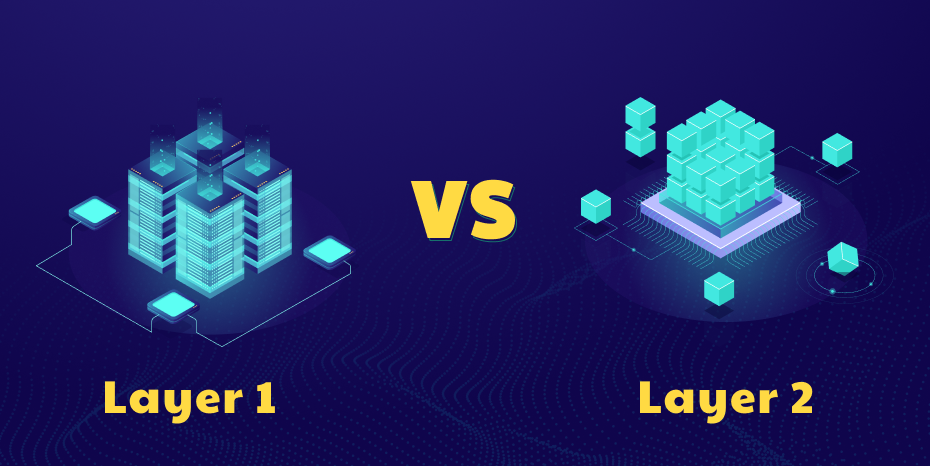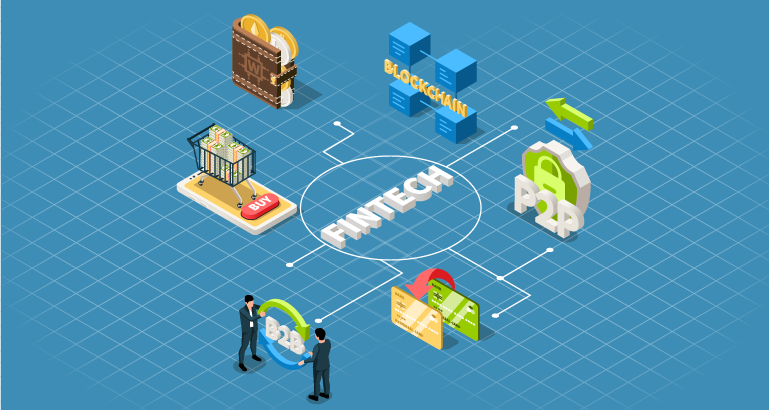Layer1 vs Layer 2
Introduction
As the adoption of blockchain gains momentum, the significance of scaling in the blockchain ecosystem has become more apparent. With precise upgrades in the system throughput rate, blockchain networks are able to fill in with new decentralized applications and a rise in transaction volume. As the usage of cryptocurrencies is executed at a large scale in real-world transactions, the need for blockchain layers offering improved security, recordkeeping, etc., has prompted. In the case of Layer 1 and Layer 2 solutions, Layer 1 means the base of a native blockchain protocol, whereas, layer 2 means a third-part solution that is deployed on layer 1 to provide scalability.
Blockchain Scalability: Explained
Blockchain technology has been considered the new pillar of the global economy. Thus, its elementary structure of decentralization faces the distinctive challenge of Blockchain Trilemma. The act of balancing between different factors of blockchain infrastructure like decentralization, security, and scalability is known as Blockchain Trilemma. The distributed computing paradigm, consensus, and blockchain’s shielding against malicious attacks are known as decentralization, and a security feature of a blockchain network respectively. And the third factor that is important is scalability.
Scalability is one of the crucial factors because it contributes to the high transactional throughput of a network. With the introduction of the new scaling solutions, scalability issues are tackled by increasing the transaction capacity. These two new generations of scaling solutions are called Layer-1 and Layer-2 scaling solutions.
Reasons For Blockchain Scalability
Since blockchain technology networks are decentralized. They utilize processing power, and time for protecting users' privacy and integration through transactions. To complete transactions, data has flowed through different steps including acceptance, mining, distribution, and verification on a node network. So much time and effort are invested in the decentralization and security process, that scalability takes a back seat in the entire process.
Layer 1 Scaling Solution
As the name suggests, layer 1 refers to the base protocol of a blockchain network. It assists in upgrading the base layer of a blockchain network to offer advancements in scalability. Multiple customized methodologies have been developed for direct upgradations in the scalability of blockchain networks for layer 1 solutions. The direct improvements enable rules that modify transaction capacity and speed. Thus, it offers better opportunities for storing more data and users, and improvements in block size or speed of block-creation. Two important factors that contribute to alteration for achieving Layer 1 scaling in blockchain networks are changes in consensus protocol and sharding.
A consensus mechanism is a tolerant mechanism that is utilized in a blockchain system to attain the required agreement on a single data value/single state of a blockchain network in a distributed network. And, the distribution of the workload of the whole network in a different dataset is known as sharding.
Layer 2 Scaling Solutions
The difference in technologies brings out Layer 2 scaling solutions. Layer 2 scaling solution works on the underlying blockchain protocol. With the assistance of an off-chain protocol/network, scalability and efficiency are increased. In the case of the Layer 2 scaling solution, transferring the burden of a transaction to the off-chain architecture. The final transactions that occur at the off-chain architecture are reported back at the base blockchain network.
The layer-2 scaling solution offers a simpler, smoother, and flexible transfer of data. Due to this, the congestion at the base network is cleared, facilitating scalability. One common example of a Layer-2 solution is the Lightning Network, which is a scalability solution for Bitcoin.
The major area of differences between Layer-1 and Layer-2 solutions
Basis of differentiation | Layer- 1 | Layer- 2 |
| It is the modification that is brought up in the base network to get the desired scalability. | By utilizing an off-chain structure, scalability is improved. |
| Larger block sizes, and new consensus mechanisms are added to power scalability. | Moving transactions and workload to off-chain architecture. |
| Consensus protocol, sharding, block size modification. | Nested blockchains, Sidechains, State channels |
| It serves as a source of truth, the final responsibility of transactions, and innovation in designs. | Improves network performance, and reduces transaction fees. |
Conclusion
Scalability is one of the important factors that contribute to the functionality of a blockchain network. Layer 1 contributes to adjustments in the scalability of a blockchain protocol. Whereas, In the case of Layer 2 solution, third-party solutions are added to enhance scalability. These two distinct layers are added to contribute towards scalability with new opportunities like DeFi and NFTs attracting more users every day. Contact us or reach out to our team of blockchain experts for more clarifications about blockchain technology, DApps, and much more.
About Author
Gururaj Potnis
Gururaj Potnis is an accomplished entrepreneur with 18 years of experience across ventures such as Erasmic Consulting, Manthan, and Idea Bubbles. An alumnus of IIM Calcutta and IIT Delhi, Gururaj has a proven track record of steering organizations through growth and transformation. His leadership philosophy centers on fostering innovation, nurturing talent, and delivering scalable, future-ready solutions that resonate across industries.









